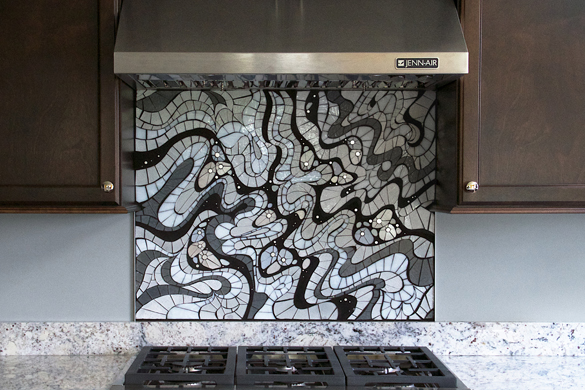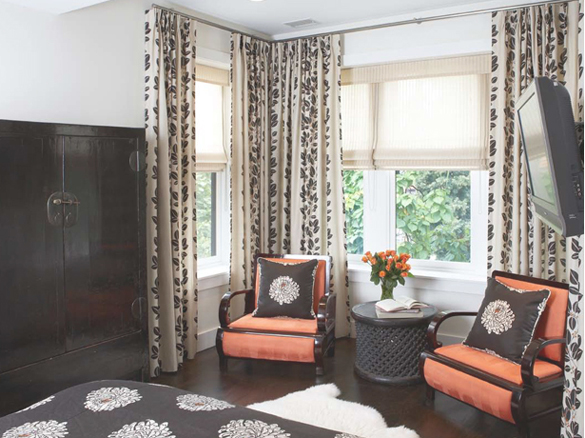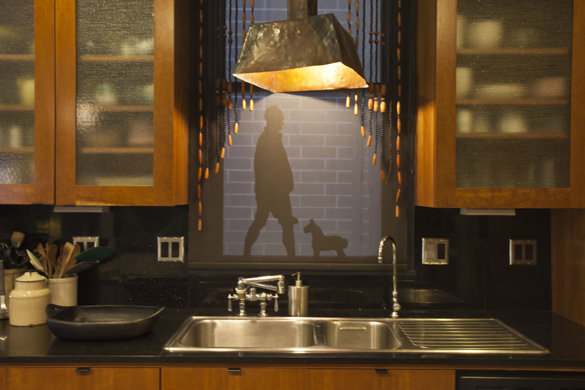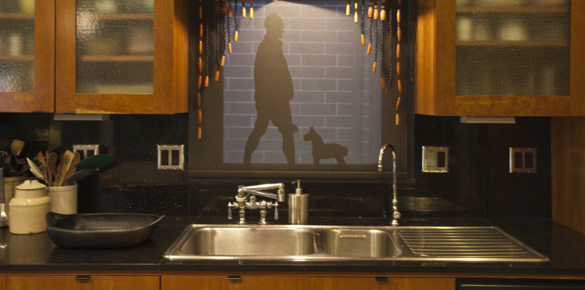You buy a house. It’s what you put into it that makes it a home.
Whether it’s your first or your forever home, the choices you make about how to decorate and furnish it significantly impact your enjoyment of the space. Often, people make decisions based on a single catalog—without really exploring the entire breadth of decorating options available to them.
Here’s what you need to know: Exquisite, custom interior design is within everyone’s reach.
Think artfully
“From a cognitive perspective, we need a dynamic visual experience,” says Heather Hancock, artist and owner of her own studio. “It’s what our brain thrives on.”
Hancock works with glass to create not just stand-alone pieces of art, but beautiful backsplashes and mosaics in residential settings. Always an artist, Hancock transitioned from a career in the neuro-sciences to exclusive studio work. Her clinical background remains a huge influence, but art, glass and custom design are her true passions.
Hancock’s work runs the gamut, from small backsplashes to larger installations inside a home at a variety of price points.

Photo courtesy of Heather Hancock
“(Some people think) fine art should be in a museum, and that’s really a mistake,” she says. “We live in context—we need to be surrounded by beauty, we need to be engaged.”
Designer John Diekmann concurs—and adds that too many people assume “custom” equates with “expensive.”
“Custom” doesn’t have to have a huge price tag
“I think the very first thing people need to realize is there is a huge misconception about custom—people think it’s expensive, but it doesn’t have to be,” he says. “There’s pretty much something for every budget.”
Diekmann, who owns Workroom Inc. with his partner Joel Klaff, focuses on working with individual clients to choose custom fabrics that bring a home’s function to life.

Photo courtesy of Klaff and Diekmann
“My whole purpose is to edit (for the client),” he says. “Form follows function—if it doesn’t do what you need it to do, it’s useless.”
Diekmann is also a big believer in accessibility to custom design. “There are things you can do with mid-range fabrics to make them look couture,” he says. “I focus on things that are accessible to people, that they can get longevity out of. If they’re going to put their money into something, they’re going to have longevity.”

Photo courtesy of Klaff and Diekmann
Consider design a process, not just a project
Custom interior design doesn’t have to have an end date. If a larger project is either too daunting or too pricy, artist Patrick Roullier suggests breaking it down into more manageable pieces, or just looking at design from a different perspective.
“Maybe they inherit a piece of furniture where the color doesn’t work, or a mural they like but isn’t the right scale,” he says. Rather than dump the furniture for a new piece, or dismiss artwork because of its size, “Using professionals can sometimes make a project suddenly become more reasonable.”

“Choosing a focal point as opposed to an entire room is one way to start,” says Roullier, who specializes in hand-painted floors, walls and furniture. “I’ve gotten calls from younger people and they want to do part of a mural to begin with and then add to it when they are able to—something that would be expensive for a client, the designer can sort of break it up a bit.”

Stairwell mural painted by Patrick Roullier
Custom design is more than just a personal investment
Choosing to use custom design makes a powerful statement. “I thinks there is a different kind of quality that comes across when something is handmade, hand painted, or hand drawn—people are interested in that element of craftsmanship,” Hancock says.
And the impact isn’t limited just to how your home looks—it messages your support of creative professionals. “Even children say, ’Oh, that’s going to be mine someday,” Roullier says. “They automatically identify something they want (that) their parents have, and they now know that an artist has a role in their life just like a dentist or a doctor. That gives me hope.”

